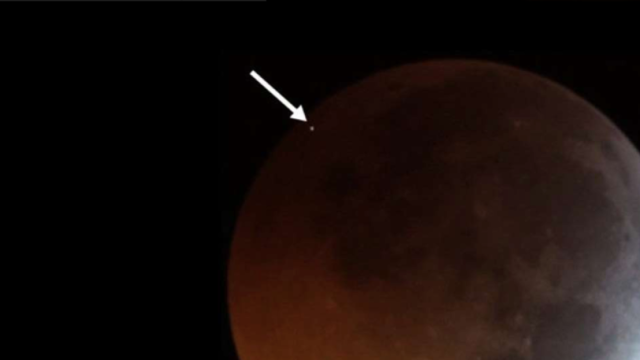A new experiment will attempt to explain the strange flashes that appear on the Moon’s surface.
Transient lunar phenomena are brief flashes of light and colour on the surface of the Moon. Just this year, we reported that a bright, hot flash of light appeared during a lunar eclipse; in this case, it was caused by a meteorite impact. Researchers at Julius-Maximilians-Universität Würzburg (JMU) in Germany hope to better understand these phenomena with a new experimental setup.
Amateur and professional astronomers have reported seeing these events for a millennium. But there are 402,336km, an atmosphere, and a ton of intervening dust separating the Moon and Earth’s surface, so actually understanding them requires more than just understanding the Moon, but also characterising the intervening space.
The researchers built a Moon-monitoring telescope at a private observatory north of Seville, Spain. If both of the telescope’s cameras register a flash, it notifies the researchers. It’s still a work in progress, and the telescope’s team lead, professor Hakan Kayal, expects another year before the system is completed, according to a release from JMU. Once the team documents a flash, they will initiate further analysis in order to determine its cause.
Kayal explained that the research is important because if we’re interested in increasing our lunar presence, we should know the local conditions. That’s especially true if the causes of the flashes could harm astronauts or lunar infrastructure.
So, do scientists have any ideas as to what could be causing the events? Most obviously, asteroids slamming into the lunar surface could cause a flash.
Researchers have also proposed, based on observations, that some of the Moon’s craters emit radioactive radon gas. We’re also learning that the Moon undergoes seismic activity as it shrinks, and perhaps these tectonic events cause visible flashes. The flashes might be caused by any combinations of these or other yet-to-be-considered causes.
To make things more complicated, it’s hard to completely rule out meteors striking our own atmosphere, glints from passing satellites, or other atmospheric phenomena. Scientists need to collect more observations of these flashes in a coordinated way, with independent confirmations, to account for observational error.
And while they’re at it, maybe someone could spend a ton of money to build a telescope with a high-enough resolution to image the Apollo landing sites from Earth so that people will stop emailing me about Moon-landing conspiracies every time I write about the Moon. Unfortunately, this would requite an unfeasibly large telescope, given how small the lunar modules are in comparison to the Moon’s size and distance.
